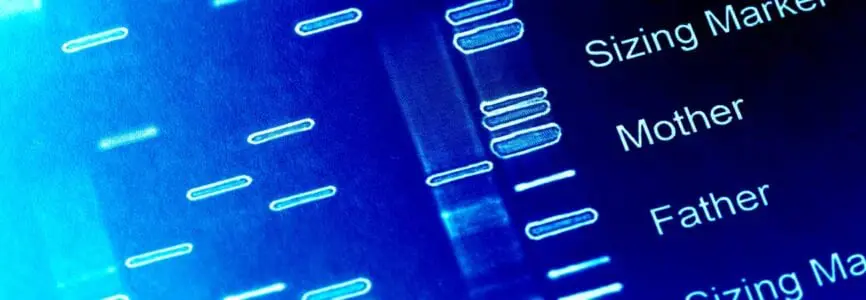Bioethics Forum Essay
Is Noninvasive Prenatal Genetic Testing Eugenic?
Before noninvasive prenatal screening becomes a routine part of gestational care, society needs to have difficult conversations about the ethical implications and establish a paradigm for truly informed consent in reproductive decision-making. These are admirable goals, set out in an article by Vardit Ravitsky in a special report on reproductive medicine published earlier this month by The Hastings Center, but the logic by which she reaches them is questionable.
Ravitsky argues that there are two rationales for widespread NIPT. One is reproductive autonomy, which values giving women maximum information to make informed choices. The other is public health, which sees NIPT as a way to reduce the societal burden of genetic disease. She sees the reproductive autonomy rationale as flawed because of the pressure on women to terminate certain pregnancies, but ultimately worthy of aspiration. In contrast, she argues, drawing from a disability rights framework and its eugenic overtones, “resisting the public health rationale as a basis for prenatal screening is ethically and pragmatically crucial.” I am not so sure.
In rejecting the public health rationale so fervently, Ravitsky gives great weight to the argument in disability rights literature that NIPT is morally questionable because it leads to a high rate of termination of fetuses with certain genetic disorders, which sends the message to those living with those disorders that their lives are not with living. The problem with this argument is that it appears to apply with the same force against any kind of discretionary abortion.
Abortions are not and never will be obtained randomly. Some identifiable groups of fetuses (e.g., those conceived by young, unmarried, poor women) are more likely to be aborted than others. It is harder to raise a child if one is poor than rich, just as it is harder to raise a child with Down syndrome than without. But, of course, many women will still choose to have their child notwithstanding plausible reasons not to. In the same way that the termination of a fetus with a genetic disease after NIPT could send a message to those living with the disease that their lives are not worth living, the termination of a fetus because its mother is single could send a message to people who were born to single mothers that their lives are not worth living.
While elective abortion may be thought of most often as an issue of reproductive autonomy (as is NIPT), public health, cost saving, and even crime reduction arguments are made in its favor all the time. If Ravitsky’s articulation of the disability rights argument gets us to rethink widely available NIPT, then maybe we have to rethink widely available abortion.
The public health rationale for NIPT can be justified as an effort to cure disease. Cancer sufferers, of course, are not insulted by efforts to cure cancer, nor do they critique such efforts as erasing important diversity of experience and motivated by discrimination against them personally. The distinction between curing cancer and screening for genetic diseases is that cancer, if cured, would be cured in the same people that it currently afflicts. People with cancer would certainly object to their own elimination to make way for a new generation genetically immune to cancer. But, thank God, no one is proposing eliminating people with Down syndrome. Rather, widely available NIPT would lead to relatively fewer children being born with Down syndrome. The analogy in the cancer context would be the development of genetic engineering that would make cancer impossible in future people but would not cure the people who currently have it. I can’t see the cancer sufferers objecting.
There is, in my opinion, a plausible argument to be made that NIPT with the stated public health goal of limiting the incidence of genetic disorders in the population is closer to a cure than an assault on personhood (although some very smart people disagree with my premises). The argument is best made by example. A committed couple is planning to have a child, and prepares to do so (chooses a name, decorates the room, etc.). They conceive, and upon realizing the child will have Down syndrome aborts the fetus and soon thereafter conceives again, giving birth to a child with the same name, family relationships, peer group, social position, and approximately half of the same genes, but without Down syndrome.
If we assume that embryos are not themselves persons, there is no obvious reason why we have to assume that two genetically and numerically distinct embryos are different persons in a morally meaningful sense. If narrative or social identity is what we care about when we think about personhood, one could look at the story I just told as one of a single person, being cured of Down syndrome. In this way, the public health-motivated use of NIPT could lose its eugenic associations and be seen as the straightforward curing of disease.
Finally, turning to the issue of reproductive autonomy, Ravitsky is worried that widely available NIPT, in the absence of some kind of perfect-to-the-point-of-utopian informed consent mechanism, would put pressure on women to abort genetically abnormal fetuses and in so doing make women the unwitting warriors of a eugenic project. But the alternative she proposes, taking into account the disability rights critique, inevitably does the same thing.
The disability rights critique attaches some moral opprobrium to terminating fetuses based on their genetic diseases. That is its entire point. Any paradigm that takes it into account puts moral pressure on women, who could otherwise choose to terminate their pregnancies for any or no reason, not to terminate after learning that their child will have particular genetic abnormalities. This makes those women the unwitting warriors in an effort to ensure a certain distribution of genotypes in the pool. It may not be classical eugenics, but it is a eugenic project just the same.
James Toomey is a second-year law student at Harvard Law School.














One point to remember when considering the public health impact of NIPT is the ability to provide early intervention to a newborn with a genetic condition identified through NIPT. This has the potential to mitigate the costs to the public through reduction of the level of “disability,” and by increasing the potential of the person to become a productive member of society.
Cancer is not person-affecting, in the way that Down syndrome is person-affecting. The same goes for the possible young mother and her possible child. In the case of Down syndrome and other conditions, a type of person has been identified as not welcome in the world. This sends messages to people with Down syndrome and their families that they are not valid or important. Questions are inevitably raised, as whole genome sequencing becomes cheaper and more available, about who else is not seen as worthy of existence. All of us have flawed genomes, have disease risks, might be better off never having existed…
As Parfitt and others have shown, the termination of a fetus with Down syndrome means the choice of a different possible life. It cannot logically be considered a cure of a single person. Nor does it benefit the fetus. Nor is the person with Down syndrome harmed by being born.
The disability rights critique does not necessarily put pressure on women not to terminate pregnancy: I hope it never does. It should offer the possibility of a good life for a child with Down syndrome – or another impairment – and their family, and thus challenge the negative versions so often reproduced in society and in clinical attitudes. Both proponents of selective termination, and advocates for disabled people, should tread carefully so as not to make the difficult choices of pregnant women and their partners more stressful.
Thank you for your thoughtful comment. I would push you on why we consider people with Down syndrome as a “type of person” and those born to young others as something else. While in one case the type is defined by biological traits and the other social, and there may be differences in the degree to which a person’s identity is defined by these two particular examples (although one could come up with others which reverse the intuition that the biological is more fixed and powerful), I do not see the grounds on which we should consider people with Down syndrome a qualitatively different type of person but not do the same for other potential types of people, such as those born to young mothers.
Parfitt assumes rather than shows that two different fetuses represent two different potential persons. I challenge that assumption.
I wholly agree that we must be careful to make sure that pregnant women and these partners can make these decisions with confidence and in comfort. But I worry that the disability rights critique tells many women that their choice to terminate certain pregnancies is based in morally impermissible bias, and that to do so would be eugenic (and, presumably, evil), which puts moral pressure on these women to keep the fetuses, ultimately only because other people think they should.
There is a very subtle distinction between “difference” and “disease.” The categories are often overlapping in the way we define things, especially when you throw in the term “disability.” I think it should be taken into account that people diagnosed with cancer would like cancer eliminated for future generations, whereas people with Down Syndrome often celebrate their difference and the community it creates. I remember being shocked when I first learned that members of the deaf community defend their difference by rejecting hearing aids, and sometimes refer to themselves as a linguistic minority.
I see your point that complete independence of thought (especially in a weighty decision like terminating a pregnancy) doesn’t exist in the real world. Societal pressure always plays a role. We are very deeply programmed with messages about which lives are worth living, which is why a screening effort with the implicit aim of diminishing certain future populations is so troubling, especially if we hope to become a society that embraces diversity (genetic and otherwise).
Harriet McBryde Johnson’s “Too Late To Die Young” influences my thinking a lot in this topic. It’s a great book if you haven’t read it.